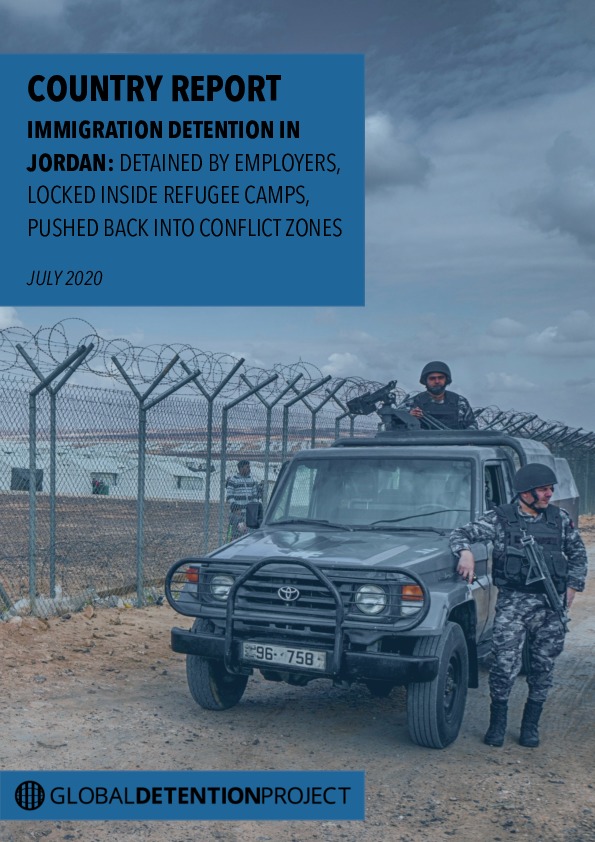Migrant workers in Jordan have been given a deadline to leave the country, as authorities announced that they would prioritise the employment of Jordanian citizens in the wake of the crisis. Having initiated a strict lock-down to control the virus, the country has started to loosen measures and businesses have now been given the green […]
Jordan: Covid-19 and Detention
Although the GDP has not been able to find reports of authorities taking steps to protect persons in immigration detention, various reports have highlighted that in Zaatari and Azraq refugee camps – which some observers have likened to immigration detention facilities (although the GDP does not classify them as such) – temperature screening has been […]

Last updated: July 2020
DETAINEE DATA
DETENTION CAPACITY
ALTERNATIVES TO DETENTION
ADDITIONAL ENFORCEMENT DATA
PRISON DATA
POPULATION DATA
SOCIO-ECONOMIC DATA & POLLS
LEGAL & REGULATORY FRAMEWORK
Does the Country Have Specific Laws that Provide for Migration-Related Detention?
Detention-Related Legislation
GROUNDS FOR DETENTION
Immigration-Status-Related Grounds
Criminal Penalties for Immigration-Related Violations
Grounds for Criminal Immigration-Related Incarceration / Maximum Length of Incarceration
Has the Country Decriminalised Immigration-Related Violations?
LENGTH OF DETENTION
DETENTION INSTITUTIONS
Custodial Authorities
PROCEDURAL STANDARDS & SAFEGUARDS
COSTS & OUTSOURCING
COVID-19 DATA
TRANSPARENCY
MONITORING
Types of Authorised Detention Monitoring Institutions
NATIONAL HUMAN RIGHTS MONITORING BODIES
NATIONAL PREVENTIVE MECHANISMS (OPTIONAL PROTOCOL TO UN CONVENTION AGAINST TORTURE)
NON-GOVERNMENTAL ORGANISATIONS (NGOS)
GOVERNMENTAL MONITORING BODIES
INTERNATIONAL DETENTION MONITORING
INTERNATIONAL TREATIES & TREATY BODIES
International Treaties Ratified
Ratio of relevant international treaties ratified
Relevant Recommendations or Observations Issued by Treaty Bodies
> UN Special Procedures
Visits by Special Procedures of the UN Human Rights Council
Relevant Recommendations or Observations by UN Special Procedures
> UN Universal Periodic Review
HEALTH CARE PROVISION
HEALTH IMPACTS
COVID-19
Country Updates
Government Agencies
Prime Minister, https://www.pm.gov.jo/Default/Ar
Ministry of the Interior (Arabic), www.moi.gov.jo
International Organisations
UNHCR Representation in Jordan, www.unhcr.jo
UNHCR Jordan Country Page, http://reporting.unhcr.org/node/2549#_ga=1.26115903.32124244.1433849501
United Nations Relief and Works Agency for Palestine Refugees in the Near East, http://www.unrwa.org/
NGO & Research Institutions
Justice Center for Human Rights (Arabic), www.jcla-org.com
National Center for Human Rights, www.nchr.org.jo/english/home.aspx
Tamkeen for Legal Aid and Human Rights, https://tamkeen-jo.org/en



